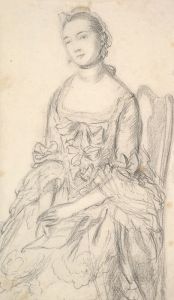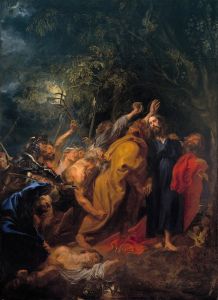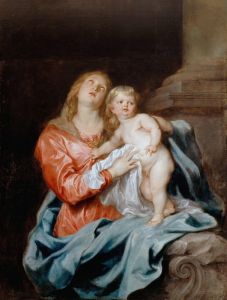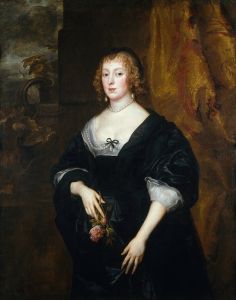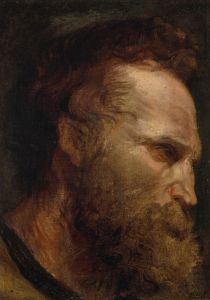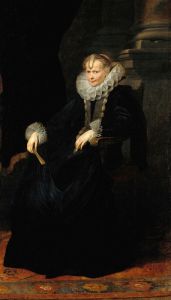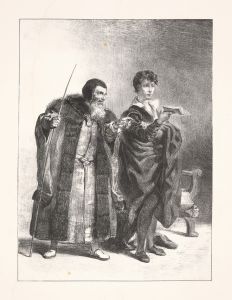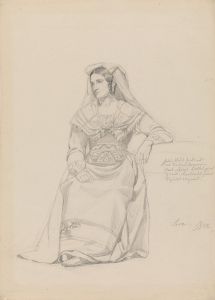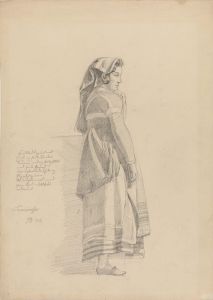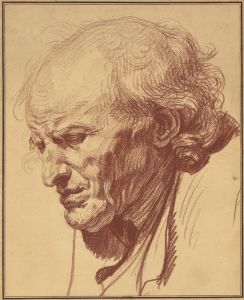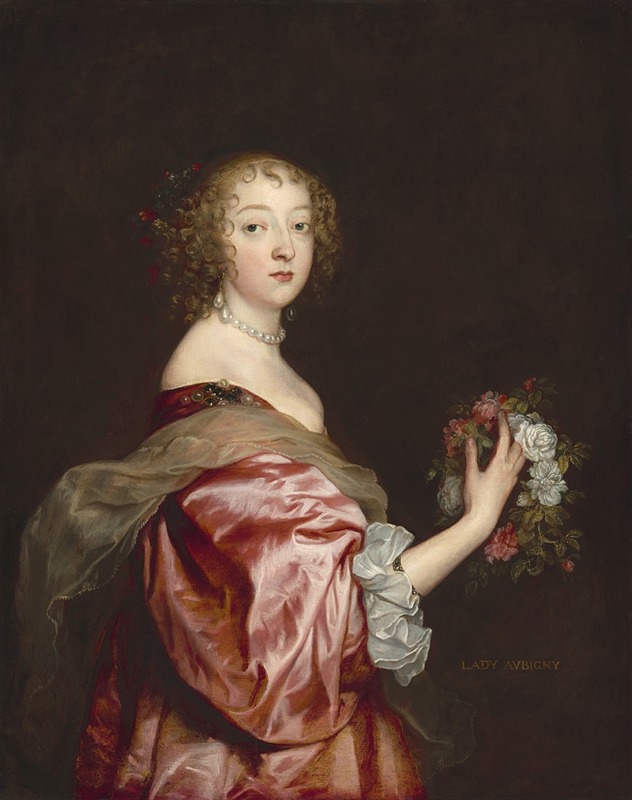
Catherine Howard, Lady d’Aubigny
A hand-painted replica of Anthony van Dyck’s masterpiece Catherine Howard, Lady d’Aubigny, meticulously crafted by professional artists to capture the true essence of the original. Each piece is created with museum-quality canvas and rare mineral pigments, carefully painted by experienced artists with delicate brushstrokes and rich, layered colors to perfectly recreate the texture of the original artwork. Unlike machine-printed reproductions, this hand-painted version brings the painting to life, infused with the artist’s emotions and skill in every stroke. Whether for personal collection or home decoration, it instantly elevates the artistic atmosphere of any space.
Catherine Howard, Lady d’Aubigny, is a portrait painted by the renowned Flemish artist Anthony van Dyck. Van Dyck, who was a leading court painter in England during the early 17th century, is celebrated for his portraits of the English aristocracy, capturing the elegance and poise of his subjects with remarkable skill and sensitivity.
The portrait of Catherine Howard, Lady d’Aubigny, is an exquisite example of Van Dyck's ability to convey both the physical likeness and the inner character of his sitters. Catherine Howard was a member of the English nobility, and her marriage to George Stuart, 9th Seigneur d'Aubigny, linked her to the prominent Stuart family. The Stuarts were a significant royal family in England, and their connections extended across Europe, making Catherine a figure of considerable social standing.
In the portrait, Van Dyck employs his characteristic style, marked by a refined use of color, light, and texture. Catherine is depicted with a serene expression, her gaze directed towards the viewer, which was a common feature in Van Dyck's portraits, intended to engage the observer directly. Her attire is typical of the period's aristocratic fashion, featuring luxurious fabrics and intricate detailing, which Van Dyck renders with meticulous attention to detail. The artist's use of light enhances the texture of the fabrics and the softness of her skin, creating a lifelike representation that is both dignified and approachable.
Van Dyck's portraits often included subtle elements that hinted at the sitter's personality or status. In this painting, the background and any accompanying objects are kept minimal, focusing the viewer's attention entirely on Catherine herself. This compositional choice underscores her importance and the respect accorded to her position in society.
The portrait of Catherine Howard, Lady d’Aubigny, is part of Van Dyck's broader body of work that significantly influenced portrait painting in England. His style set a new standard for elegance and sophistication in portraiture, impacting subsequent generations of artists. Van Dyck's ability to capture the essence of his subjects made him a favorite among the English nobility, and his works remain highly regarded in art history.
Today, Van Dyck's portraits, including that of Catherine Howard, are appreciated not only for their artistic merit but also for their historical significance. They provide insight into the fashion, culture, and social dynamics of 17th-century England. The portrait of Catherine Howard, Lady d’Aubigny, stands as a testament to Van Dyck's mastery and his contribution to the art of portraiture, offering a glimpse into the life and status of an English noblewoman during a vibrant period in history.





